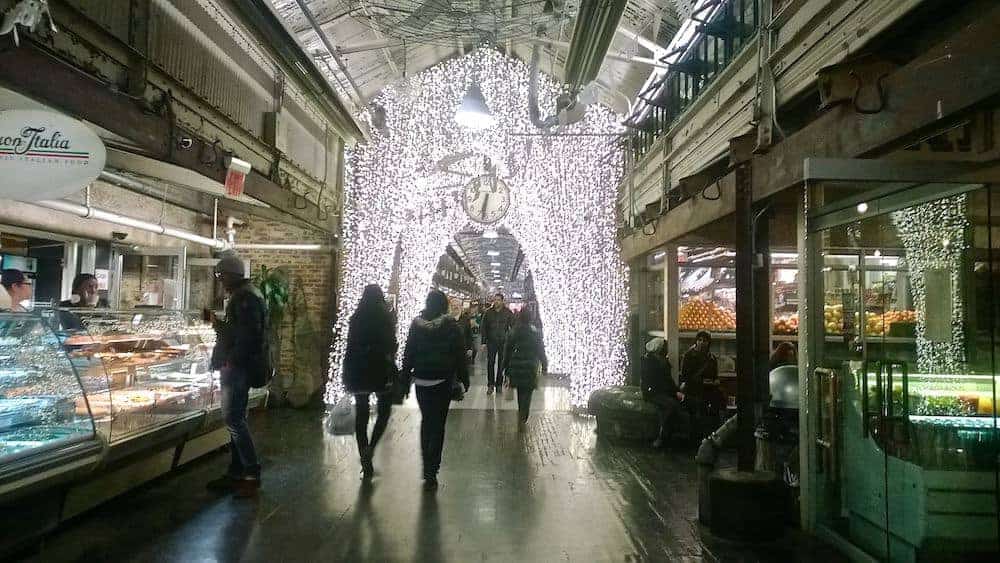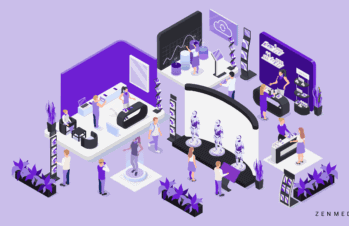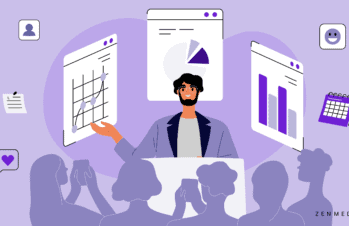Marketing in the age of the connected consumer requires some serious rethinking of traditional digital marketing tactics.
How do you get someone’s attention with a Facebook ad, when they’re seeing hundreds of similar ads in a single day?
How do you craft content striking enough to stand out in a what’s become a sea of content, all vying for customers’ attention?
How do you appeal to the connected consumer, who expects their online and offline worlds to coexist seamlessly?
While there are certain tactics that can help you when it comes to social ads and content creation, brands should also start exploring – if they haven’t already – experiential marketing.
Experiential marketing isn’t new. It’s been around as long as marketers have been around – in fact, you can trace experiential marketing back as far as the World’s Fairs, the first of which took place in Prague in 1791. Industrialists, inventors, and creators of all types brought their creations to the fair and create massive exhibitions – massive experiences – for visitors to engage with and learn from.
More recently, we’ve seen elements of experiential marketing in event marketing, which companies have been engaging in for decades. But true experiential marketing goes further. It’s more creative, more customer-centric, and more interactive.
That’s why the most forward-thinking brands are beginning to see experiential marketing as a vital tool to have in their toolbox. Experiential is a powerful way to connect with your customers – and it can give your brand some of its biggest marketing wins. Here’s why.
Experiential marketing is proven to build stronger connections with your customers.
Research proves that experiential marketing works.
In fact, according to a report by The Event Marketing Institute and Mosaic:
- 70% of users at an experiential marketing event become regular customers after taking part in that event
- 98% of users feel more inclined to purchase after attending a brand activation
- 74% of event attendees say that they have a more positive opinion about the company, brand, product or service being promoted after the event
Companies that engage in experiential marketing consistently see a high ROI – the largest companies, with event budgets of between $50 and $100 million, regularly expect an ROI approaching 5:1.
Why does experiential work?
Experiential marketing is based on the same principles as experiential learning.
In experiential learning, students are given opportunities to learn through doing. They have an experience, like observing animals at a zoo rather than reading about them in a textbook, and then – and this is a crucial element in experiential learning – they reflect on that experience to internalize the knowledge they gained through their experience.
In experiential marketing, the process is somewhat similar – we’re just working with customers rather than students.
When a customer has a unique, unforgettable experience with a brand, they’re building a relationship with that brand – they’re learning about the brand by doing, instead of just by reading a blog post, watching a video, or scrolling past a social ad.
Your experiential activation – and by extension, your brand – become a part of their day, a part of their memory. It’s a way to truly engage with your customers, and create the meaningful connections that the connected consumer so craves.
And while your customers might remember a particularly striking ad you posted on Instagram or a thoughtful blog post, it’s even more likely that they’ll remember that interactive art installation, or pop-up smoothie bar, or VR demo that your brand created.
Afterward, customers who engaged with your event will reflect on what happened – even if just for a fleeting moment. That moment of reflection will help strengthen the connection you began building with them through the experiential campaign.
This is why creating thought-provoking experiential campaigns – like Google’s Impact Challenge-Bay Area, which asked people to vote for their favorite nonprofit by tapping clickable paper in public spaces – can be especially effective.
Google: Impact Challenge Bay Area from Ben Beazley on Vimeo.
At Zen Media, we worked with Chase for Business to create an experiential element for their Chase for Business conferences, which target small business owners around the country.
We created an Apple-inspired “Social Media Genius Bar” to provide one-on-one digital marketing advice and insights to small business owners. Conference participants could sign up for short, 15-20 minute sessions with Zen “Geniuses” and ask any digital marketing questions they had, whether about driving more traffic to their website or developing their brand’s voice on social media.
The Social Media Genius Bar proved to be one of the most popular and well-loved components of the Chase for Business conferences – in fact, it’s so popular that we’re doing it at every Chase for Business conference in 2018.
Is experiential suitable only for large companies?
Activations like Chase and Zen’s Social Media Genius Bar, Google’s Impact Challenge, or Refinery29’s 29 Rooms (an interactive art exhibit with rooms designed by retailers, fashion houses, and other brands) can make experiential marketing seem like something only the biggest companies can pull off.
But that’s not the case.
Experiential marketing does not have to be big, splashy, or high-budget. What it does have to be is authentic, relevant to your customers, and aligned with your overall brand persona.
Maybe that means handing out a free lipgloss to moms who come into your store on Mother’s Day.
Maybe that means giving out free samples of your newest juice cocktail at a conference.
As long as it’s giving your customers a valuable experience, and nurturing that all-important connection with them, your experiential marketing campaign will be a win.
Ready to take that next step into planning your experiential marketing campaign? Get in touch with us today!









